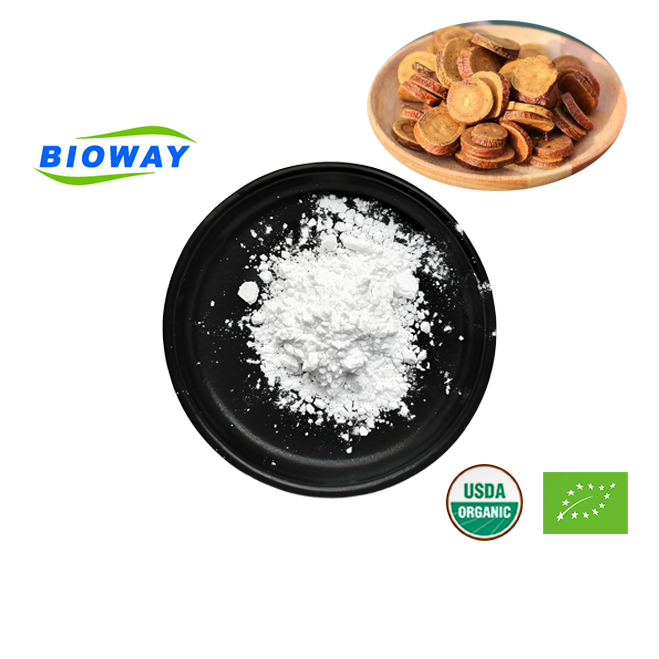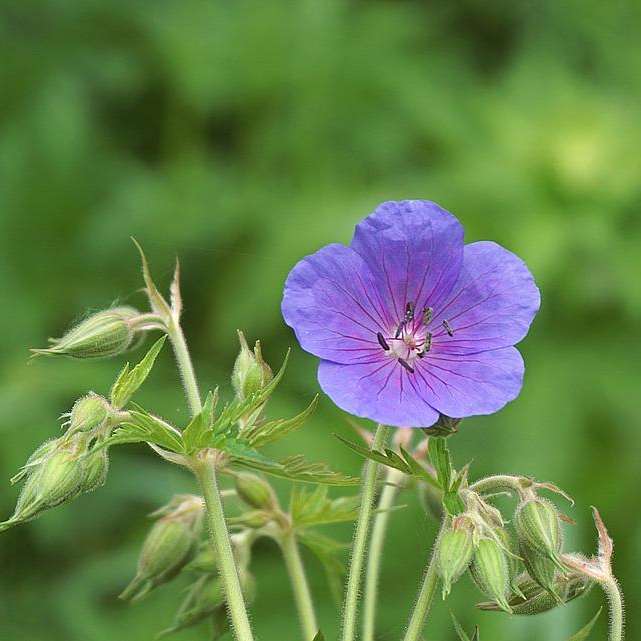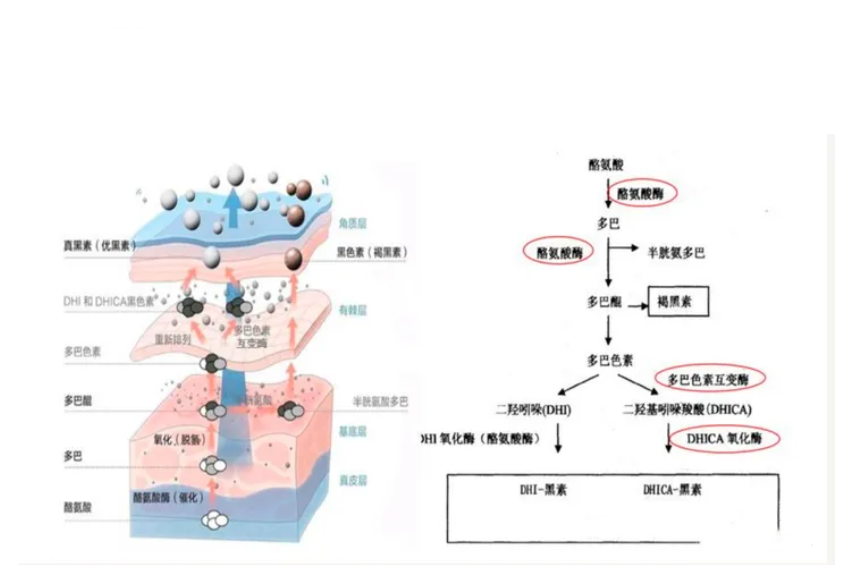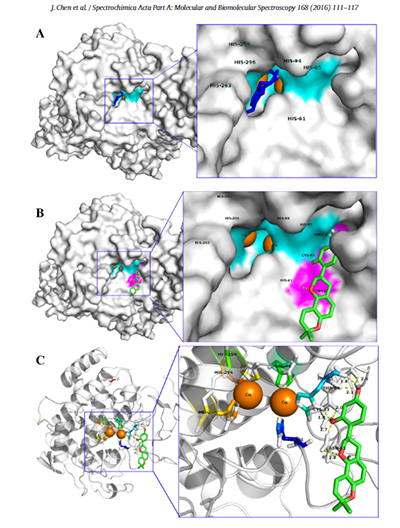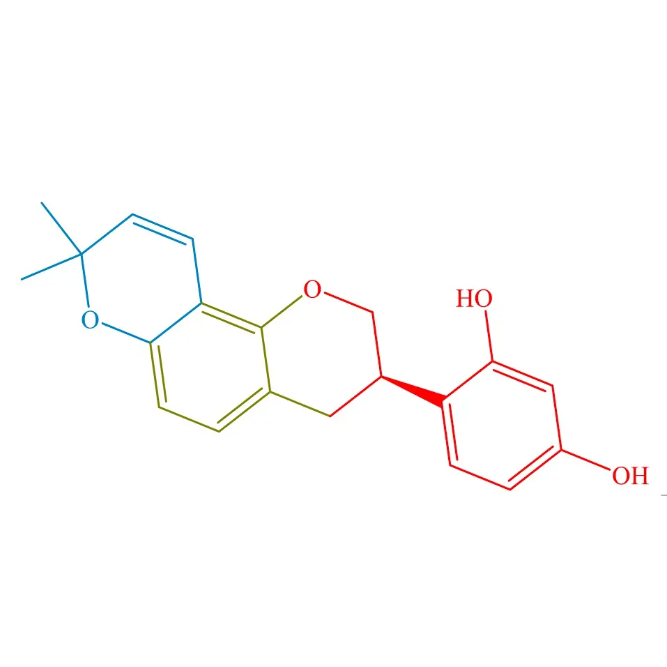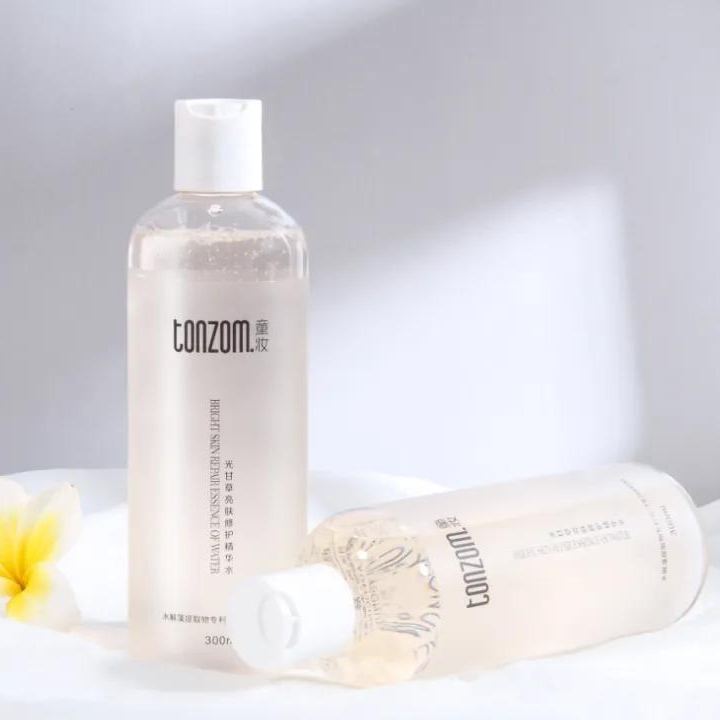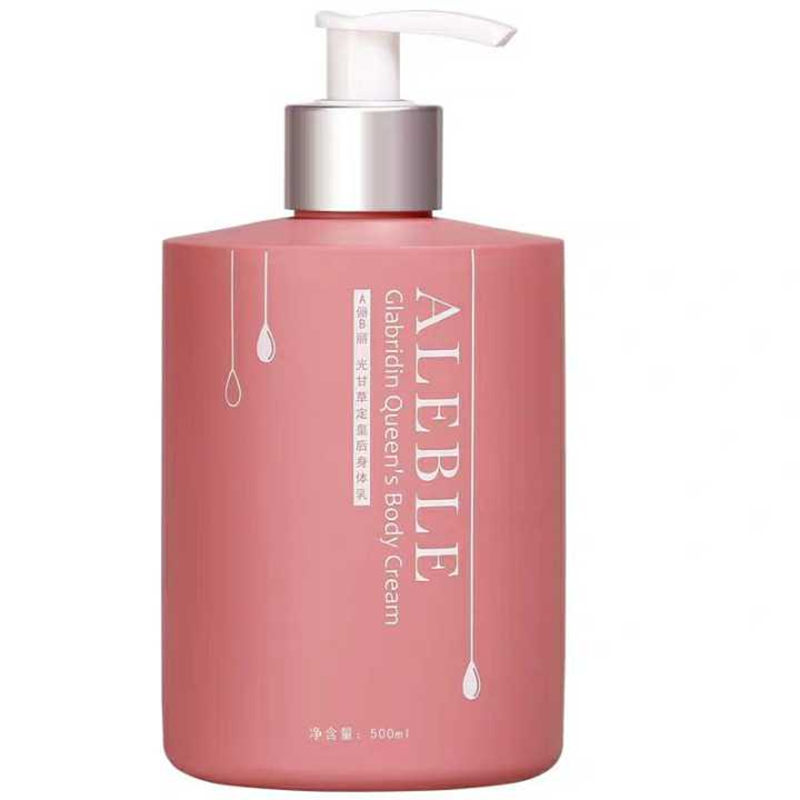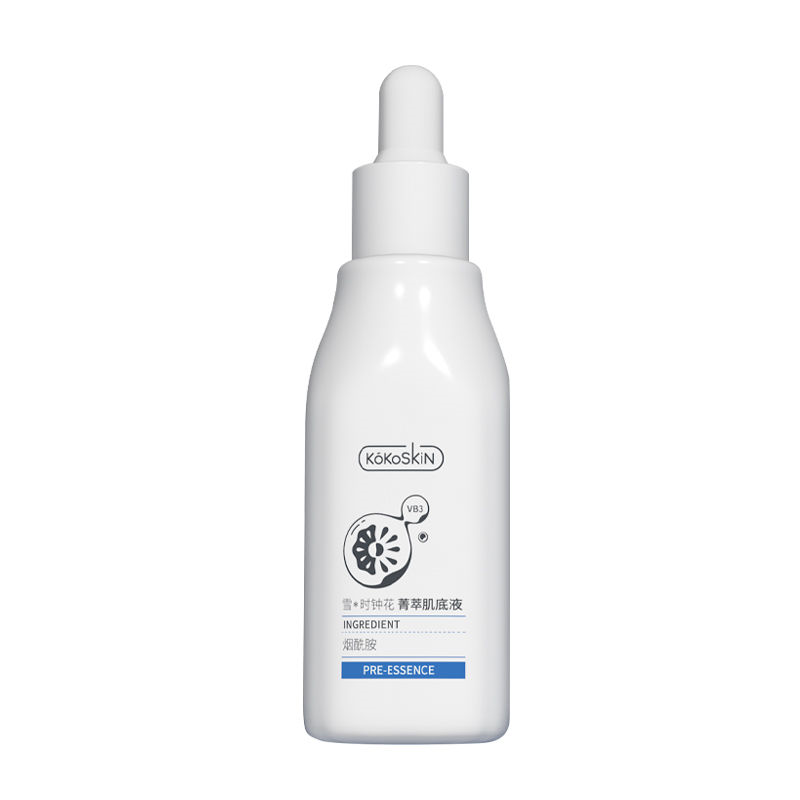I. Introduction
I. Introduction
The skin care industry has hailed the whitening prowess of "Glabridin" (extracted from Glycyrrhiza glabra) as it surpasses the whitening leader arbutin by a staggering 1164 times, earning the title of “whitening gold”! But is it truly as remarkable as it sounds? How does it achieve such extraordinary results?
As the seasons change and the streets become adorned with more “bare legs and bare arms,” the topic of conversation among beauty enthusiasts, aside from sun protection, inevitably turns to skin whitening.
In the realm of skin care, a myriad of whitening ingredients abound, including vitamin C, niacinamide, arbutin, hydroquinone, kojic acid, tranexamic acid, glutathione, ferulic acid, phenethylresorcinol (377), and more. However, the ingredient “glabridin” has piqued the interest of many fans, prompting an in-depth exploration to uncover its growing popularity. Let’s delve into the details!
Through this article, we aim to address the following key points:
(1) What is the origin of Glabridin? How does it relate to “Glycyrrhiza glabra extract”?
(2) Why is "Glabridin" revered as “whitening gold”?
(3) What are the benefits of "Glabridin"?
(4) How does Glabridin achieve its whitening effects?
(5) Is licorice truly as potent as claimed?
(6) Which skin care products containGlabridin?
No.1 Unveiling the Origins of "Glabridin"
Glabridin, a member of the licorice flavonoid family, is derived from the plant “Glycyrrhiza glabra.” In my country, there are eight main types of licorice, with three varieties included in the “Pharmacopoeia,” namely Ural licorice, licorice bulge, and licorice glabra. Glycyrrhizin is exclusively found in Glycyrrhiza glabra, serving as the primary isoflavone component of the plant.
The structural formula of glycyrrhizin
Initially discovered by the Japanese company MARUZEN and extracted from Glycyrrhiza glabra, glycyrrhizin is widely utilized as an additive in whitening skin care products across Japan, Korea, and various international skincare brands. However, it’s important to note that the ingredient listed in the skincare products we use may not explicitly be “glycyrrhizin” but rather “Glycyrrhiza extract.” While “Glycyrrhizin” is a singular substance, “Glycyrrhiza extract” may encompass additional components that have not been fully isolated and purified, potentially serving as a marketing ploy to emphasize the product’s “natural” attributes.
No.2 Why is licorice called “Gold Whitener”?
Glycyrrhizin is a rare and challenging ingredient to extract. Glycyrrhiza glabra is not easily found in abundance. Combined with the complexities of the extraction process, less than 100 grams can be obtained from 1 ton of fresh licorice stems and leaves. This scarcity drives its value, making it one of the most expensive raw materials in skincare products, comparable to gold. The price of 90% pure raw material of this ingredient soars to over 200,000 yuan/kg.
I was astounded, so I visited the Aladdin website to verify the details. The analytically pure (purity ≥99%) licorice is being offered at a promotional price of 780 yuan/20mg, equivalent to 39,000 yuan/g.
In an instant, I gained a newfound respect for this unassuming ingredient. Its unparalleled whitening effect has rightfully earned it the title of "whitening gold" or "Golden Whitener".
No.3 What is the Function of Glabridin?
Glabridin boasts a myriad of biological properties. It serves as an efficient, safe, and environmentally friendly ingredient for whitening and freckle removal. Additionally, it possesses antibacterial, anti-inflammatory, antioxidant, anti-aging, and anti-ultraviolet effects. Its exceptional efficacy in whitening, brightening, and freckle removal is supported by experimental data, which reveals that the whitening effect of Glabridin surpasses that of vitamin C by over 230 times, hydroquinone by 16 times, and the renowned whitening agent arbutin by an astounding 1164 times.
No.4 What is the whitening mechanism of glabridin?
When the skin is exposed to ultraviolet rays, triggering the production of free radicals, melanocytes are stimulated to produce tyrosinase. Under the influence of this enzyme, tyrosine in the skin generates melanin, leading to skin darkening as the melanin is transported from the basal layer to the stratum corneum.
The fundamental principle of any whitening ingredient is to intervene in the process of melanin formation or transportation. Glabridin’s whitening mechanism primarily encompasses the following three aspects:
(1) Inhibiting tyrosinase activity
Glabridin demonstrates a potent inhibitory effect on tyrosinase activity, yielding clear and significant results. Computer simulations reveal that glabridin can firmly bind to the active center of tyrosinase through hydrogen bonds, effectively blocking the entry of the raw material for melanin production (tyrosine), thereby impeding melanin production. This approach, known as competitive inhibition, is akin to a bold romantic gesture.
(2) Suppressing the generation of reactive oxygen species (antioxidant)
Exposure to ultraviolet rays induces the production of reactive oxygen species (free radicals), which can damage the skin’s phospholipid membrane, resulting in erythema and pigmentation. Hence, reactive oxygen species are known to contribute to skin pigmentation, underscoring the importance of sun protection in skincare. Experimental studies have demonstrated that glabridin exhibits similar free radical scavenging capabilities to superoxide dismutase (SOD), functioning as an antioxidant. This serves to mitigate the factors contributing to increased tyrosinase activity.
(3) Inhibiting inflammation
Following skin damage from ultraviolet rays, the appearance of erythema and pigmentation is accompanied by inflammation, further exacerbating melanin production and perpetuating a detrimental cycle. Glabridin’s anti-inflammatory properties create a conducive environment for inhibiting melanin formation to a certain extent, while also promoting the repair of damaged skin.
No. 5 Is Glabridin Truly That Potent?
Glabridin has been hailed as an effective and environmentally friendly ingredient for whitening and freckle removal, boasting a well-defined whitening mechanism and remarkable efficacy. Experimental data indicates that its whitening effect surpasses that of the “whitening giant” arbutin by over a thousand times (as reported in experimental data).
Researchers conducted an animal experimental model using zebrafish to assess the inhibitory effect of glabridin on melanin, revealing a significant comparison with kojic acid and bearberry.
In addition to animal experiments, the clinical results also highlight the outstanding whitening effect of glabridin, with noticeable results observed within 4-8 weeks.
While the efficacy of this whitening ingredient is evident, its utilization is not as widespread as other whitening ingredients. In my opinion, the primary reason lies in its “golden status” in the industry—it’s expensive! Nevertheless, following the use of more commonplace skincare products, there is a growing trend of individuals seeking products containing this “golden” ingredient.
No.6 Which Skincare Products Contain Glabridin?
Disclaimer: The following is a list, not a recommendation!
Glabridin is a potent skincare ingredient known for its skin-brightening properties. It can be found in various skincare products, including serums, essences, lotions, and masks. Some specific products that may contain Glabridin, however, it’s important to note that the presence of Glabridin in skincare products may vary, and it’s advisable to carefully review the ingredient lists of specific products to identify its inclusion.
(1) Aleble Licorice Queen Body Lotion
The ingredient list prominently features “Glycyrrhiza glabra” as the second ingredient (following water), along with glycerin, sodium hyaluronate, squalane, ceramide, and other moisturizing components.
(2) Children’s Makeup Light Fruit Licorice Repair Essence Water
Key ingredients include Glycyrrhiza glabra extract, hydrolyzed algae extract, arbutin, Polygonum cuspidatum root extract, Scutellaria baicalensis root extract, and more.
(3) Kokoskin Snow Clock Essence Body Serum
Featuring 5% nicotinamide, 377, and glabridin as its main components.
(4) Licorice Facial Mask (Various Brands)
This category of products varies, with some containing minimal amounts and marketed as herbal “glabragan.”
(5) Guyu Licorice Series
No.7 Soul Torture
(1) Is the Glabridin in skincare products truly extracted from licorice?
The question of whether Glabridin in skincare products is truly extracted from licorice is a valid one. The chemical structure of licorice extract, particularly glabridin, is distinct, and the extraction process can be costly. This raises the question of whether it might be more practical to consider chemical synthesis as an alternative method for obtaining glabridin. While some compounds, such as artemisinin, can be obtained through total synthesis, it is theoretically possible to synthesize glabridin as well. However, the cost implications of chemical synthesis compared to extraction should be considered. Additionally, there may be concerns about the intentional use of the “Glycyrrhiza glabra extract” label in skincare product ingredient lists to create a natural ingredient marketing appeal. It’s important to delve into the origins and production methods of skincare ingredients to ensure transparency and authenticity.
(2) Can I apply high-purity licorice directly on my face for a snow-white complexion?
The answer is a resounding no! While the whitening effect of glabridin is commendable, its properties limit its direct application. Glycyrrhizin is nearly insoluble in water, and its ability to penetrate the skin barrier is weak. Incorporating it into skincare products necessitates rigorous production and preparation processes. Without proper formulation, it would be challenging to achieve the desired effect. However, scientific research has led to the development of topical preparations in the form of liposomes, enhancing the absorption and utilization of glabridin through the skin.
references:
[1] Pigmentation: dyschromia[M]. Thierry Passeron and Jean-Paul Ortonne, 2010.
[2] J. Chen et al. / Spectrochimica Acta Part A: Molecular and Biomolecular Spectroscopy 168 (2016) 111–117
Contact Us
Grace HU (Marketing Manager) grace@biowaycn.com
Carl Cheng ( CEO/Boss ) ceo@biowaycn.com
Website: www.biowaynutrition.com
Post time: Mar-22-2024

